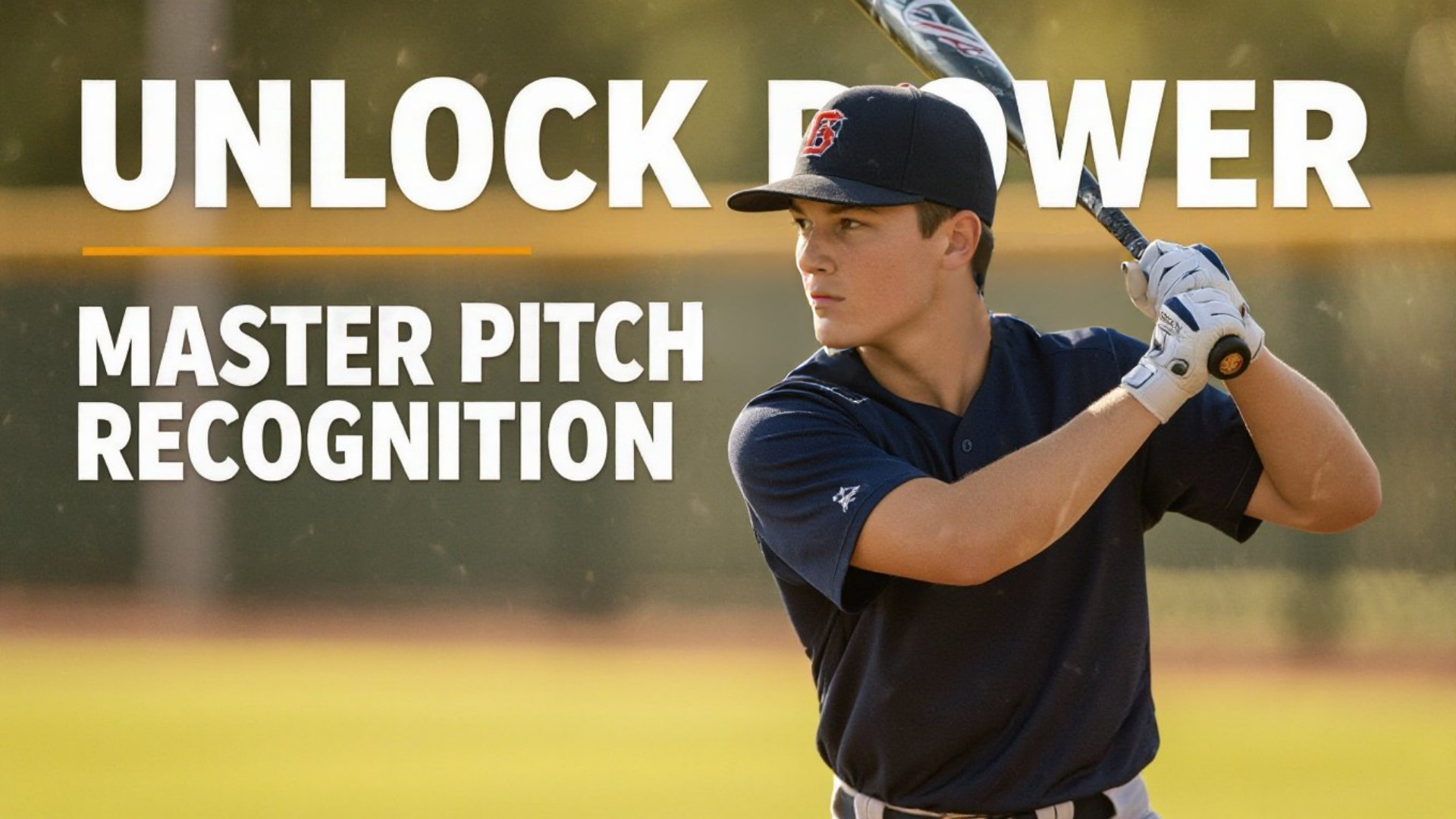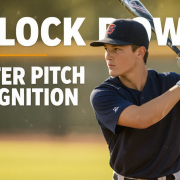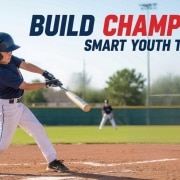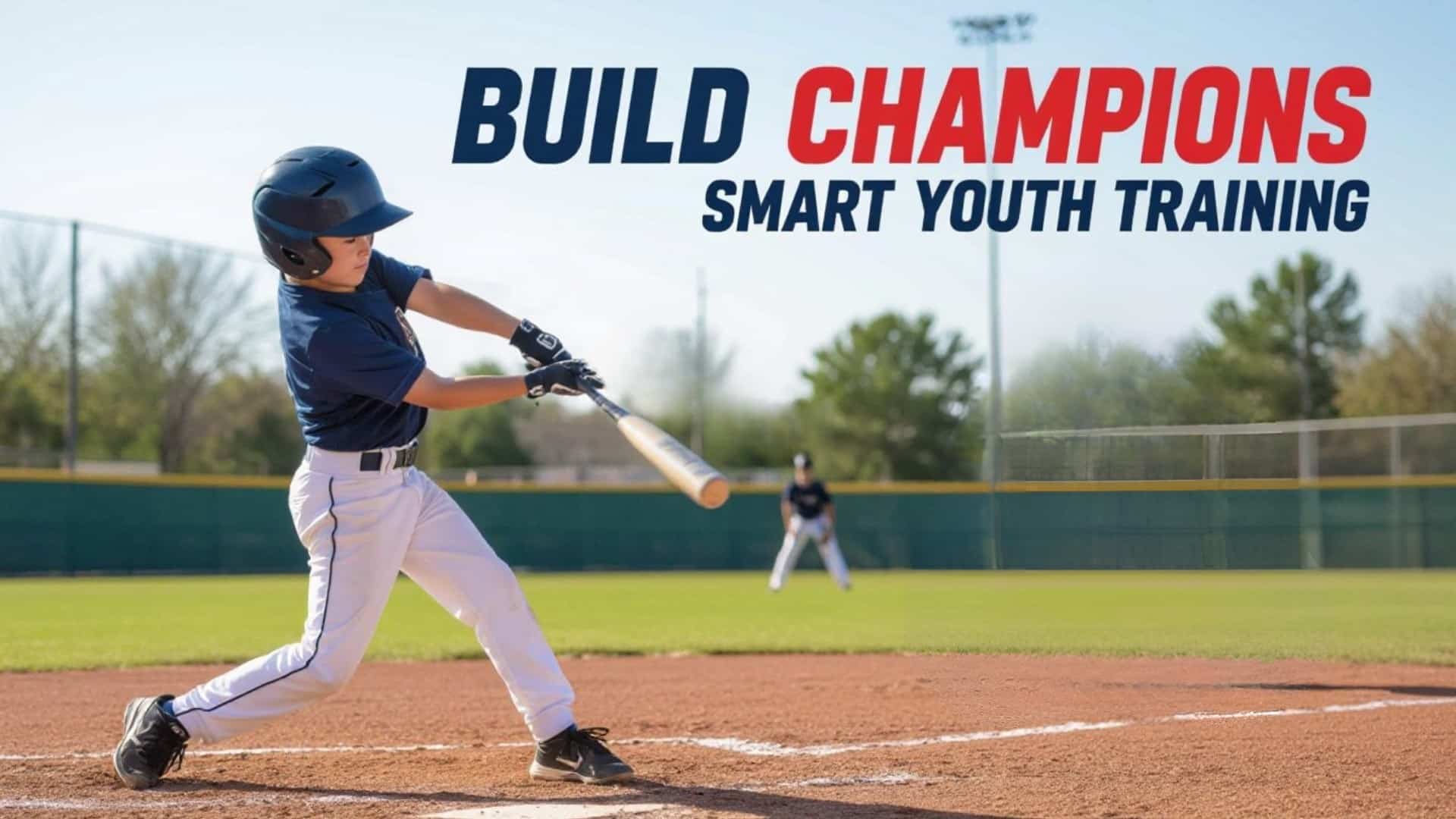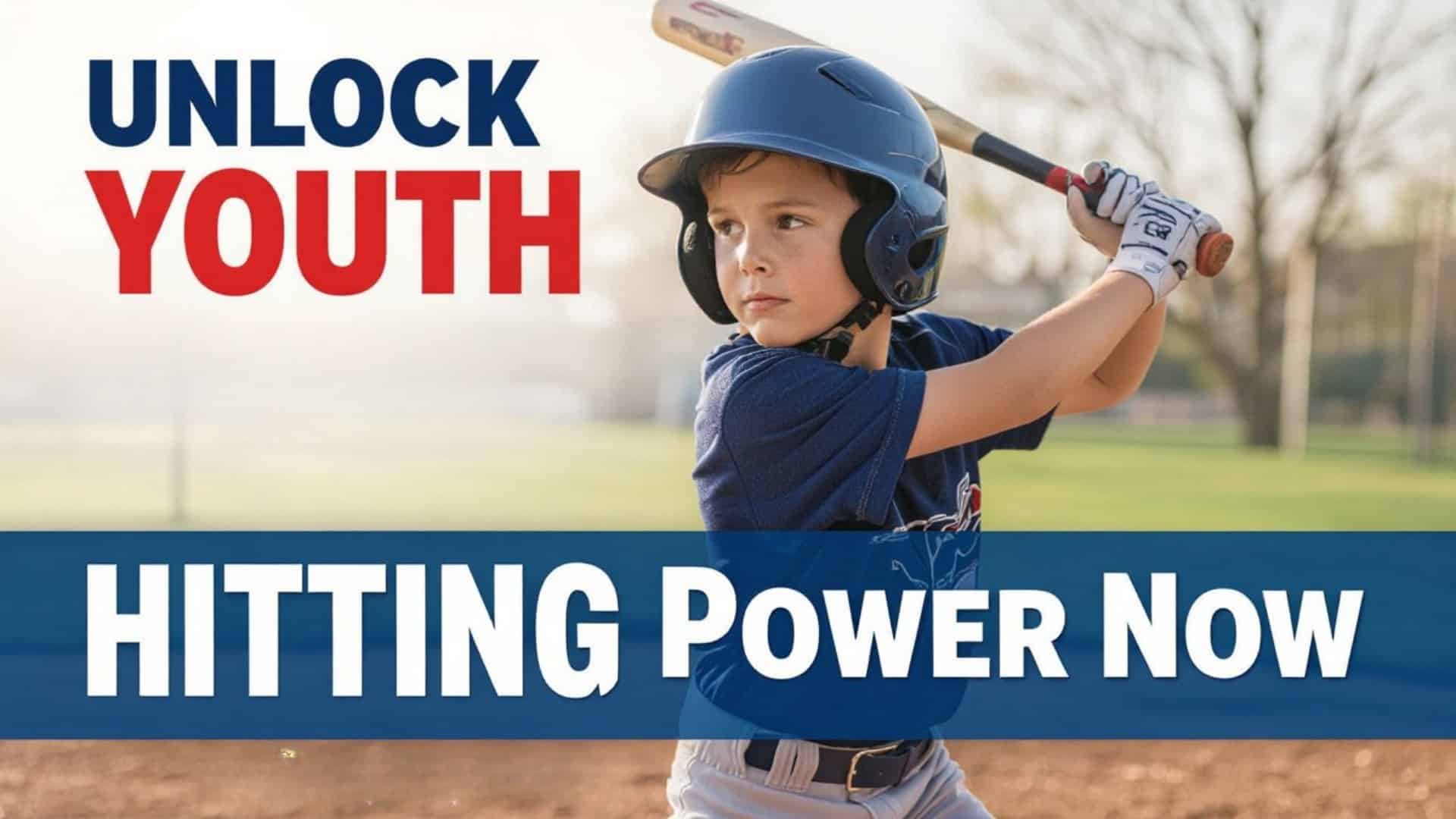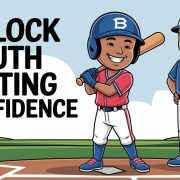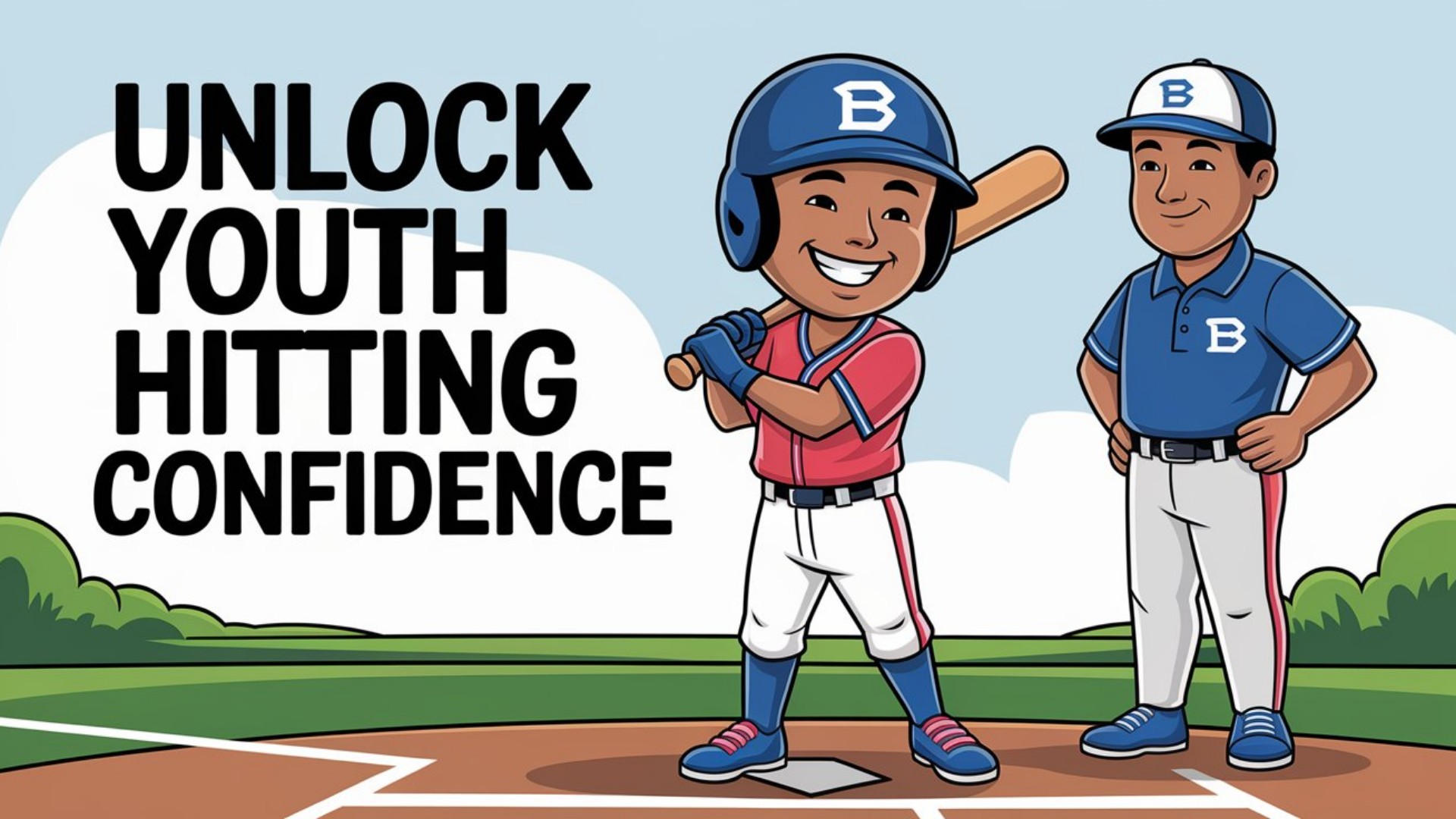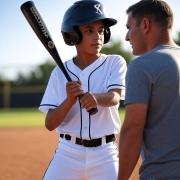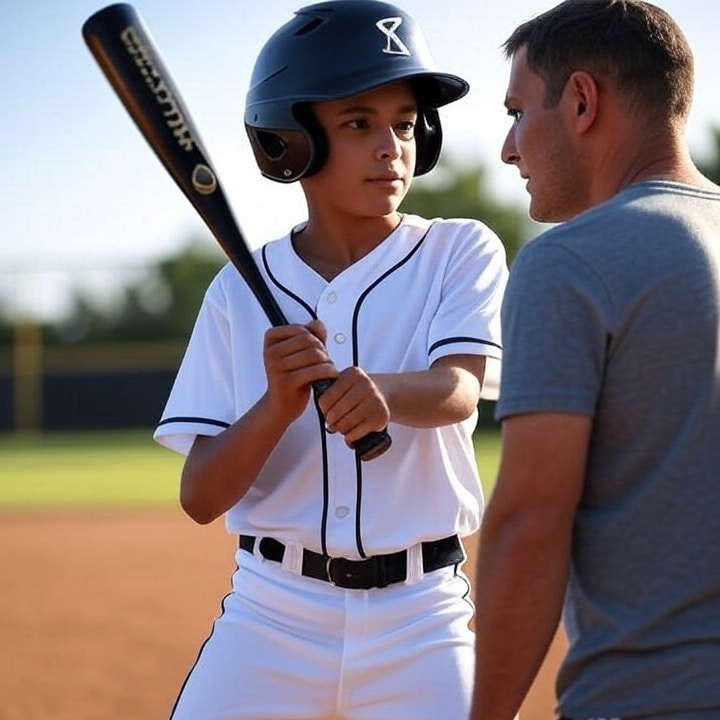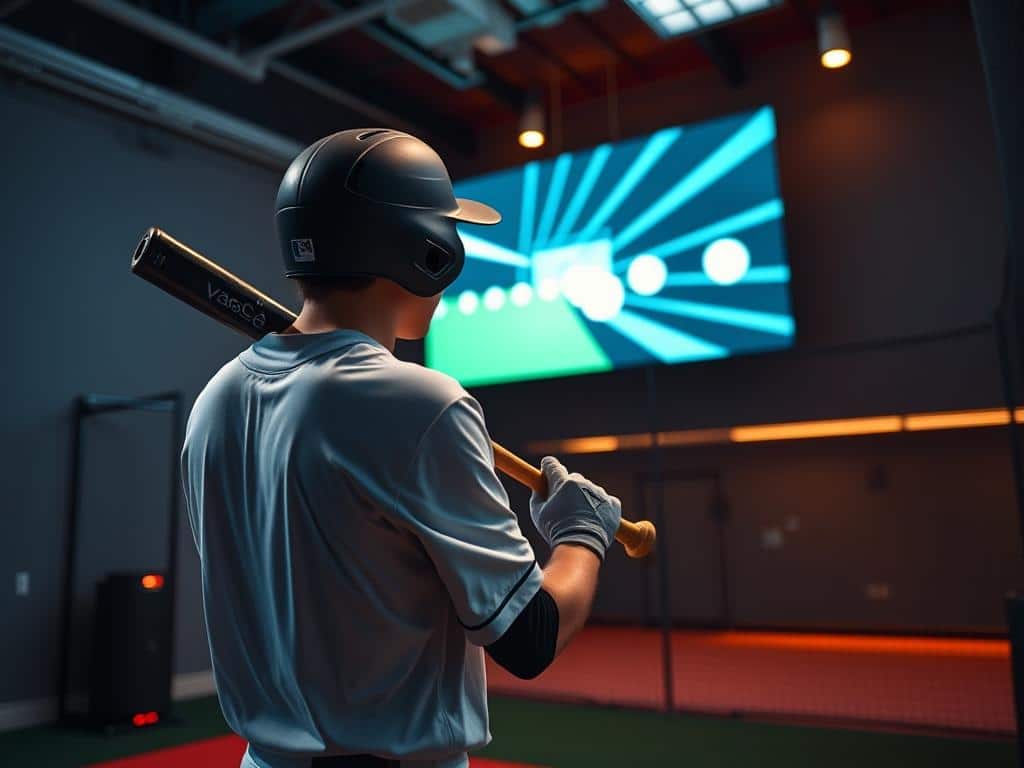
The $8 Tool MLB Pros Use to Fix Youth Timing at Home
Did you know that a significant number of youth hitters struggle with timing issues, resulting in late swings that can be the difference between a hit and a miss? It’s a frustrating problem that can be addressed! Hitting a baseball or softball requires complex perception, decision-making, and muscle coordination. At the Hitting Performance Lab, we’ve seen firsthand how vision training can be a game-changer for young athletes.
The science behind pitch recognition supports the notion that vision training can enhance a player’s offensive performance. By improving visual processing speed, young hitters can react faster and make better decisions at the plate. Our comprehensive guide will explore the connection between visual processing speed and swing timing, and provide you with a toolkit of vision training exercises to improve your game.
Key Takeaways
- Understand how vision training can address timing issues in youth hitters.
- Discover the science behind pitch recognition and its impact on batting performance.
- Learn about the Hitting Performance Lab’s approach to vision training.
- Get access to a toolkit of vision training exercises to improve swing timing.
- Improve your young athlete’s batting performance with evidence-backed techniques.
Understanding the Connection Between Vision and Late Swings
Understanding the connection between vision and late swings is crucial for youth hitters looking to improve their game! When you’re at the plate, your vision is working dynamically to track the pitch, make quick decisions, and react accordingly. It’s not just about seeing the ball; it’s about processing what you see rapidly and translating that into a physical response.
Why Youth Hitters Struggle with Timing
Young hitters often struggle with timing because their visual system is still developing. The specialized skills needed to track a fast-moving baseball or softball effectively aren’t fully formed.Late swings are one of the most common and frustrating problems youth hitters face, and contrary to popular belief, the issue often isn’t about strength or mechanics – it’s about vision processing speed! As a result, young players need to focus on enhancing their visual skills to improve their batting performance.
The Science of Visual Processing in Baseball
The science behind visual processing in baseball is fascinating. The brain needs approximately 0.2 seconds to process what the eyes see, but a 70mph fastball gives batters only about 0.4 seconds total reaction time. This tight time-frame means that youth players must develop the neural pathways that connect visual input to physical response quickly. If these pathways are still developing, it creates a delay that results in consistently late swings.
Let’s break down the key aspects of visual processing in baseball into a simple table:
| Visual Skill |
Description |
Importance in Baseball |
| Dynamic Visual Acuity |
The ability to see objects clearly when they’re moving |
High – crucial for tracking fast pitches |
| Depth Perception |
The ability to judge distances between objects |
High – essential for judging pitch trajectory |
| Reaction Time |
The time taken to respond to a visual stimulus |
High – directly affects swing timing |
By understanding and addressing these visual skills, youth hitters can significantly improve their timing and overall batting performance. It’s not just about practicing your swing; it’s about training your eyes to work in harmony with your body.
The Science Behind Vision Training for Youth Hitters

Vision training is not just a buzzword; it’s a scientifically-backed method to enhance batting performance in youth hitters. At Hitting Performance Lab, we’re passionate about sharing the latest research and techniques to help young athletes improve their game.
How Vision Affects Hitting Performance
The connection between vision and hitting is undeniable. Research has shown that visual skills play a critical role in a player’s ability to hit a baseball. Factors such as dynamic visual acuity, depth perception, and reaction time all contribute to a hitter’s success. For instance, a study found that MLB players have visual acuity between 20/10 and 20/12, significantly better than the general population.
By enhancing these visual skills through targeted vision training, youth hitters can improve their performance at the plate. It’s not just about having good eyesight; it’s about being able to track the ball, anticipate its trajectory, and react quickly.
Research Supporting Vision Training in Baseball
A groundbreaking study involving 352 professional baseball players demonstrated a significant correlation between visual skills and batting performance. The research, conducted by Spaniol et al. in 2014, used a computerized software program called Vizual Edge to assess various visual skills, including eye alignment, depth perception, and visual tracking.
The findings were compelling: players in the top 25% for vision skills outperformed those in the bottom 25% in nearly every offensive category, including batting average, strikeout percentage, and on-base plus slugging. This research underscores the importance of vision training in baseball and supports its inclusion in training regimens for youth hitters. For more information on improving your hitting consistency, check out our Instant Swing Repair program.
Essential Visual Skills for Baseball Success
Mastering specific visual skills can make a substantial difference in a baseball player’s hitting performance! As we dive into the world of baseball vision training, it becomes clear that certain visual abilities are paramount for success on the field.
Dynamic Visual Acuity
Dynamic Visual Acuity is arguably the most critical visual skill for baseball success. It’s your ability to see objects clearly while they’re in motion, like a 70mph fastball coming at you with spin and movement! Elite baseball players can identify the spin, speed, and trajectory of a pitch within milliseconds, which is why they consistently make better swing decisions than average players. This skill is not just about seeing the ball; it’s about understanding its movement and anticipating its trajectory.
Depth Perception and Tracking
Depth perception and tracking abilities allow hitters to judge exactly where a pitch will cross the plate and time their swing perfectly. Without this skill, youth hitters consistently swing over or under pitches. The ability to track the ball and understand its depth is crucial for making solid contact. It’s not just about seeing the ball; it’s about understanding its spatial relationship to the plate and the hitter.
This is a video in the Swing Shift series…
Boost your hitting skills with Swing Shift’s science-backed practice system! This program is packed with features to improve hand path stability, timing, and power. Enjoy engaging drills for consistent progress and fun challenges to keep training exciting. Swing Shift is designed to help players succeed at every level.
The Swing Shift platform lets you focus on key mechanics like bat angle, balance, and hand path control. Dive into step-by-step video lessons that cover power, contact, and rhythm, breaking down the science behind a great swing. With personalized feedback and progress tracking, you can refine your technique and watch your results improve.
Whether you’re a youth athlete, high school player, or elite hitter, Swing Shift is trusted by families and coaches everywhere. Master core skills like bat control, weight transfer, and rotational power with drills designed for real game results. Start your journey to hitting greatness with Swing Shift!
Swing Shift’s practice system offers a wide range of tools to elevate your hitting:
- RNT-based drills for real-time correction
- Engaging challenges for competitive practice
- Personalized training goals and skill progression
- Exclusive videos on timing, power, and consistency
- Hands-on feedback to track and improve your swing mechanics
- Trusted by dedicated parents, players, and coaches
Reach your full potential with Swing Shift’s comprehensive practice system. Elevate your hitting with cutting-edge techniques and proven, science-based training.
Boost Your Child’s Hitting Confidence & Power—Fast!
Give your young hitter an edge at the plate with proven drills designed to build explosive power, consistency, and confidence. Get instant access to 4 expert-crafted hitting guides—free for a limited time!
Get Your FREE Hitting Guides Now
Contrast Sensitivity and Recognition
Contrast sensitivity is particularly crucial in baseball because it allows hitters to pick up the subtle seam rotation against various backgrounds and lighting conditions that signal what type of pitch is coming. This skill helps hitters differentiate between various pitch types and anticipate the ball’s movement. By enhancing contrast sensitivity, hitters can gain a significant edge in recognizing and reacting to pitches.
Peripheral Vision Awareness
Peripheral vision awareness gives hitters the ability to simultaneously track the ball while maintaining awareness of the field, base runners, and defensive positioning. This skill separates good hitters from great ones, as it allows for a broader understanding of the game situation and more informed decision-making. By being aware of their surroundings, hitters can react more effectively to different game scenarios.
In conclusion, these visual skills are not just beneficial; they are essential for baseball success. By focusing on dynamic visual acuity, depth perception and tracking, contrast sensitivity and recognition, and peripheral vision awareness, youth hitters can significantly improve their performance and gain a competitive edge.
At-Home Vision Training Techniques
Boost your batting skills with effective at-home vision training techniques! At Hitting Performance Lab, we believe that vision training is a crucial aspect of becoming a top-notch hitter. By incorporating simple yet powerful exercises into your daily routine, you can significantly improve your performance on the field.

Brock String Training Method
The Brock String is considered the gold standard for at-home vision training. This simple yet powerful tool consists of a string with colored beads that helps train your eyes to work together when tracking moving objects!
Step-by-Step Implementation
To implement the Brock String method, start by holding the string in front of your nose, then focus on the closest bead, and systematically shift your focus to each bead down the string. This trains convergence, the critical skill that allows your eyes to track an incoming pitch.
Common Mistakes to Avoid
Common mistakes to avoid with the Brock String include training for too long (causing eye fatigue), improper string tension, and incorrect distance positioning. We recommend 5-10 minute sessions for optimal results.
Card Tracking Exercises
Card tracking exercises are fantastic for developing dynamic visual acuity. By rapidly identifying and calling out playing cards flashed at increasing speeds, youth hitters develop the quick recognition skills needed for pitch identification.
3D Depth Perception Training
3D depth perception training using specialized glasses or apps helps youth hitters judge the precise location where a pitch will cross the plate. MLB players like Ian Happ use similar techniques in the on-deck circle before at-bats!
By incorporating these at-home vision training techniques into your daily routine, you’ll be well on your way to improving your batting skills and becoming a more confident hitter. Remember, consistent practice is key, so make sure to set aside time each week to focus on your vision training.
Pitch Recognition Training for Youth Hitters

Pitch recognition training is a game-changer for youth hitters looking to improve their skills on the field! By enhancing their ability to recognize different types of pitches, young players can significantly boost their batting performance and gain a competitive edge.
Effective pitch recognition involves a combination of visual training and practice. It’s not just about seeing the ball; it’s about understanding the pitcher’s mechanics, the type of pitch, and making quick decisions. This skill is crucial for youth baseball players as it directly impacts their ability to hit the ball successfully.
Video Occlusion Methods
One of the most scientifically-validated approaches to pitch recognition training is the video occlusion method. This technique involves showing youth hitters videos of pitches from the batter’s perspective and then “blacking out” the video at crucial moments. The hitter must then decide what type of pitch is coming based on the limited information available. This method has been shown to improve reaction time and enhance overall hitting performance.
The Hitting Performance Lab has found that consistent practice with video occlusion can reduce reaction time by up to 100 milliseconds – the difference between a weak ground ball and solid contact! This is a significant improvement that can be achieved through dedicated vision training.
Pitch Type Identification Drills
In addition to video occlusion, pitch type identification drills are another effective way to improve pitch recognition. These drills should progress from simple (fastball vs. curveball) to complex (recognizing subtle differences between similar pitches like sliders and cutters) as the youth hitter develops their skills. By gradually increasing the difficulty level, hitters can refine their ability to identify pitches accurately and quickly.
Integrating Vision Training with Batting Practice
To create a powerful learning environment, it’s essential to integrate vision training with batting practice. This can be achieved by incorporating strobe glasses during soft toss or having hitters call out pitch types before swinging during machine batting practice. By combining vision training with physical practice, youth hitters can develop a more comprehensive understanding of the game and improve their overall performance.
Measuring Progress and Ensuring Success
To ensure the effectiveness of vision training, it’s crucial to track progress and set realistic expectations! At Hitting Performance Lab, we’ve seen firsthand how consistent training can lead to significant improvements in pitch recognition and overall batting performance.
Setting Realistic Expectations
Setting realistic expectations is crucial for vision training success! Typically, we see noticeable improvements in pitch recognition after 3-4 weeks of consistent training. However, significant batting average improvements may take 6-8 weeks.
It’s essential for parents and coaches to understand that vision training results follow a non-linear progression, with players often experiencing ‘aha moments’ after periods of apparent plateau.
Tracking Improvements in Game Performance
The most effective way to track improvements is through a combination of vision metrics (recognition speed, tracking accuracy) and in-game performance statistics (contact rate, strikeout percentage, quality of contact).
Research, such as a study on a University of Cincinnati baseball team, has shown that after just six weeks of vision training three times per week, the team’s batting average increased by 0.034 while the rest of their conference’s average declined! For youth hitters, we recommend creating a simple tracking system that monitors both objective metrics and subjective feedback.
Boost Your Child’s Hitting Confidence & Power—Fast!
Give your young hitter an edge at the plate with proven drills designed to build explosive power, consistency, and confidence. Get instant access to 4 expert-crafted hitting guides—free for a limited time!
Get Your FREE Hitting Guides Now
Conclusion
It’s time to revolutionize the way we approach batting training – with a focus on vision training, we can unlock new levels of performance! At the Hitting Performance Lab, we’ve seen firsthand the dramatic impact that targeted vision exercises can have on youth hitters. By addressing the root cause of late swings and timing issues, our scientifically-validated approach helps young baseball and softball players transform their game.
Vision training isn’t just another fad; it’s a comprehensive system that develops the complete visual skill set needed for success. By combining Brock String training, pitch recognition drills, and integrated batting practice, young athletes can significantly improve their visual acuity, depth perception, and reaction time. For more information on how to improve vision, check out our resource on how hitters can improve their vision.
Don’t wait until frustration sets in – implement these vision training techniques today and watch as your youth hitter begins to see the ball earlier, recognize pitches faster, and make more consistent contact! With regular training, dramatic improvements can be achieved in just 6-8 weeks. The future of batting training is here, and it’s all about vision.
FAQ
How does contrast sensitivity impact a player’s ability to hit a baseball?
Contrast sensitivity plays a crucial role in a player’s ability to detect the ball against various backgrounds, such as the sky or a cluttered stadium. Improved contrast sensitivity enables players to track the ball more effectively!
Can peripheral vision awareness really make a difference in game performance?
Absolutely! Being aware of your surroundings through peripheral vision allows you to react faster to unexpected plays and make sharper decisions on the field!
How often should I practice vision training exercises to see noticeable improvements?
Consistency is key! We recommend practicing vision training exercises at least 2-3 times a week, with a minimum of 10-15 minutes per session, to see significant improvements in your visual skills!
Will vision training really help me hit the ball more consistently?
By enhancing your dynamic visual acuity, depth perception, and reaction time, you’ll be better equipped to track the ball and make solid contact, resulting in more consistent hitting!
Can Brock String exercises really improve my depth perception?
Yes! The Brock String is a simple yet effective tool for improving depth perception by training your eyes to work together and judge distances more accurately!
How long does it take to notice improvements in my hitting performance after starting vision training?
While individual results may vary, many players start to notice improvements in their hitting performance within 4-6 weeks of consistent vision training!
